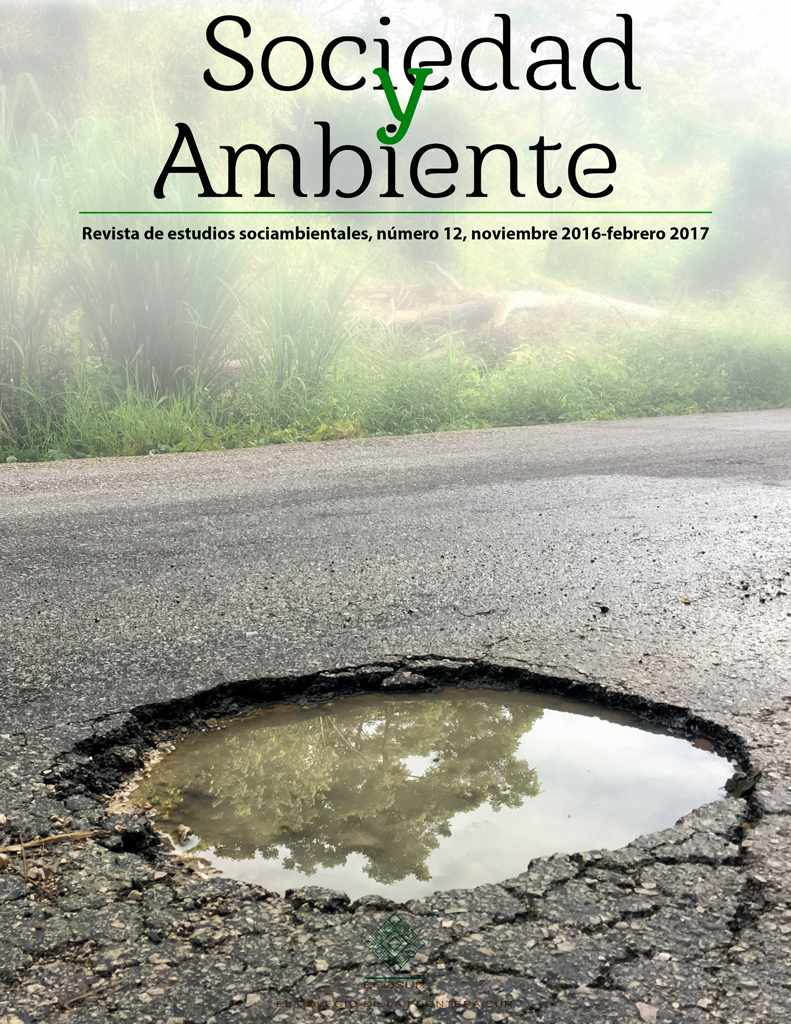Abstract
The purpose of this article is to present, describe and analyze a historical aerophoto held at the Documentary Center on Water Studies (CDEA), dated between 1931 and 1934, which shows the Tabasco plain and aspects of the landscape that have changed or remained the same. Through the identification of bodies of water, buildings and uses of space, a comparative analysis was conducted of the area’s environmental history, which explained how these modifications turned predictable annual floods into disasters in the 20th century. This is intended to encouragehistorians to analyze the landscape, which is essential in the coastal plain of the Gulf of Mexico, without losing sight of the cultural experiences of territorial recognition that have generated a “water culture”.

Sociedad y Ambiente by ECOSUR is licensed under a Creative Commons Reconocimiento-NoComercial-SinObraDerivada 2.5 México License


